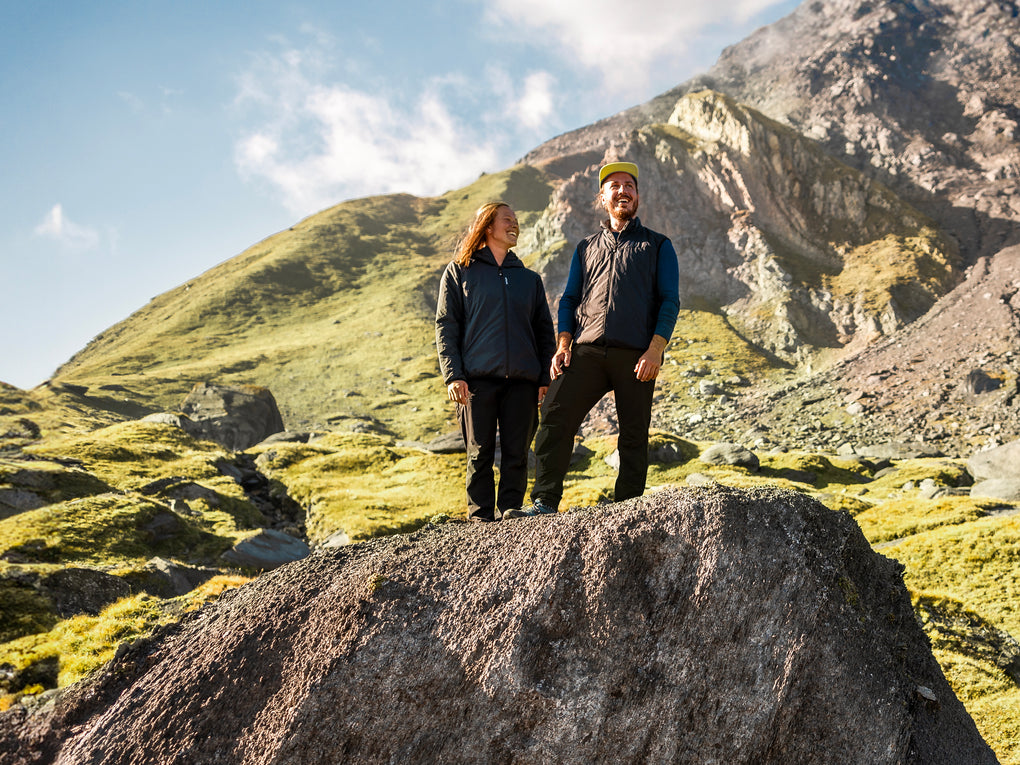PFAS in the Outdoor Industry

PFAS in the Outdoor Industry
European media, in a coordinated effort, strongly warn against the contamination of the environment with toxic chemicals known as PFAS. They refer to it as the "poison of the century," which has already been detected in thousands of locations across Europe, including drinking water (Tages-Anzeiger, NZZ, Blick, SRF).
In this blog, we'll delve into what PFAS stands for and what these chemicals have to do with the outdoor industry. We've gathered answers to some of the most pressing questions for you.
***
What are PFAS?
PFAS is an abbreviation for per- and polyfluoroalkyl substances. These are artificially synthesized substances mainly composed of carbon (C) and fluorine (F).
Currently, more than 4,700 individual PFAS variants are recorded by the OECD. However, the EU Commission estimates that there are more than 10,000 representatives of this group of substances.
The individual PFAS molecules vary widely in their shape and properties. They all share the characteristic of being extremely stable.
What is the difference between PFC and PFAS?
PFC stands for per- and polyfluorinated chemicals. The term per- and polyfluoroalkyl substances, abbreviated as PFAS, is now predominantly used in the scientific literature. Both abbreviations, PFC and PFAS, can be used interchangeably.
Why are PFAS problematic?
The main problem with PFAS is that they cannot be broken down by natural processes. Neither sunlight nor microorganisms can break the chemical bond between carbon and fluorine.
When PFAS enter the environment, they persist for a very long time, continuously accumulating. PFAS can now be detected virtually everywhere in Europe, including in drinking water.
Some PFAS are also known to cause serious health problems in humans.
Are PFAS toxic?
PFAS are generally not acutely toxic, but some members of the group are known to lead to chronic exposure in humans.
PFAS can accumulate in the body and affect the liver, kidneys, or thyroid gland, or interfere with metabolism. Thus, they can influence many functions in the body.
PFAS, overall, are still poorly researched. For most PFAS, it is simply not known what effect they have in the environment or in the body, especially in the long term.
How do people ingest PFAS?
Mainly through drinks and food. The biggest problem in Europe is the contamination of drinking water.
In which products are PFAS found?
Many PFAS create smooth surfaces that repel water, grease, or dirt. Therefore, they are often found in water, grease, and dirt-repellent coatings. For example, in pans, baking molds, cable coatings, seals, medical technology, and food packaging. PFAS are also present in ski wax, bicycle chain oil, lubricants, adhesives, paints, blowing agents, or refrigerants. Many textiles are also treated with PFAS, including carpets, sofas, curtains, or outdoor clothing.
While many other products do not directly contain PFAS, they are produced with their help, as they help maintain a clean environment in industrial processes.
How do PFAS enter the environment?
Many PFAS are released into the air through factory chimneys during product manufacturing or through industrial wastewater into rivers. Sewage treatment plants do not completely remove them.
PFAS also dissolve from products such as ski wax and lubricants during use or from textiles during washing.
The amount of PFAS emitted into the air from waste incineration plants has not yet been systematically studied.
How are PFAS used in the outdoor industry?
In the outdoor industry, PFAS are mainly used in waterproof membranes and as water- and dirt-repellent coatings.
Are there alternatives for these applications?
There are now good PFAS-free alternatives for both waterproof membranes and impregnations of outdoor clothing.
For membranes, microporous olefins (better known as polypropylene) and hydrophilic membranes have become established alternatives to PFAS-based ePTFE membranes.
For impregnations, there are effective alternatives based on paraffin, silicone, and dendrimers.
What is ROTAUF doing?
True to the precautionary principle, ROTAUF has completely avoided the use of PFAS since 2013, both in membranes and impregnations. We do not want to leave lasting traces in nature that cannot be erased by the next snowfall or rain shower.
For waterproof membranes, we rely on the polyester-based, hydrophilic membranes from Sympatex®. For impregnations, we use various PFAS-free technologies that are optimally matched to the base material.
What is the government doing?
The EU wants to restrict the production of PFAS. During a transitional period, known hazardous substances should be banned or only used to a limited extent.
Switzerland intends to review the current maximum values for the two most well-known harmful PFAS representatives, PFOA and PFOS.







Leave a comment